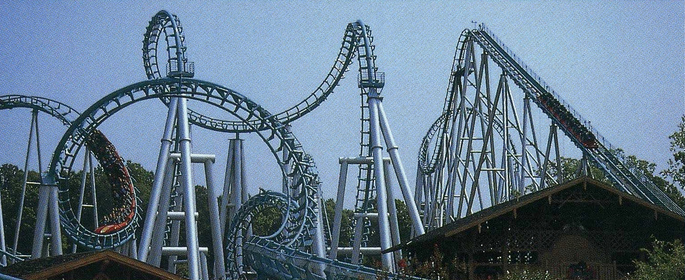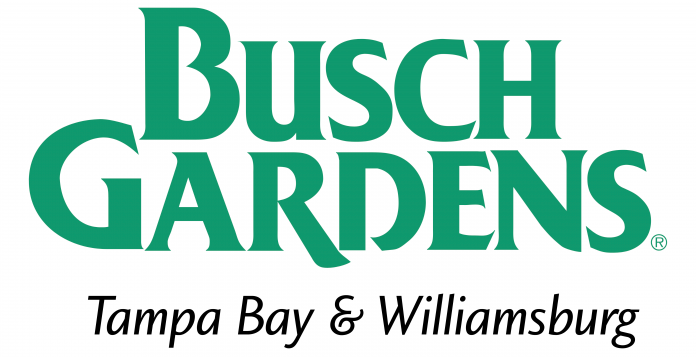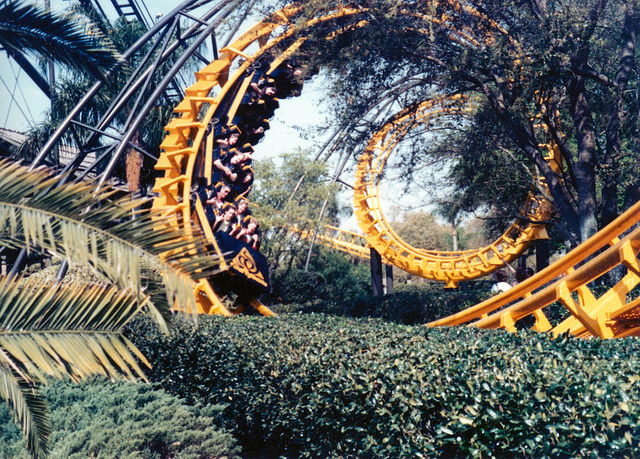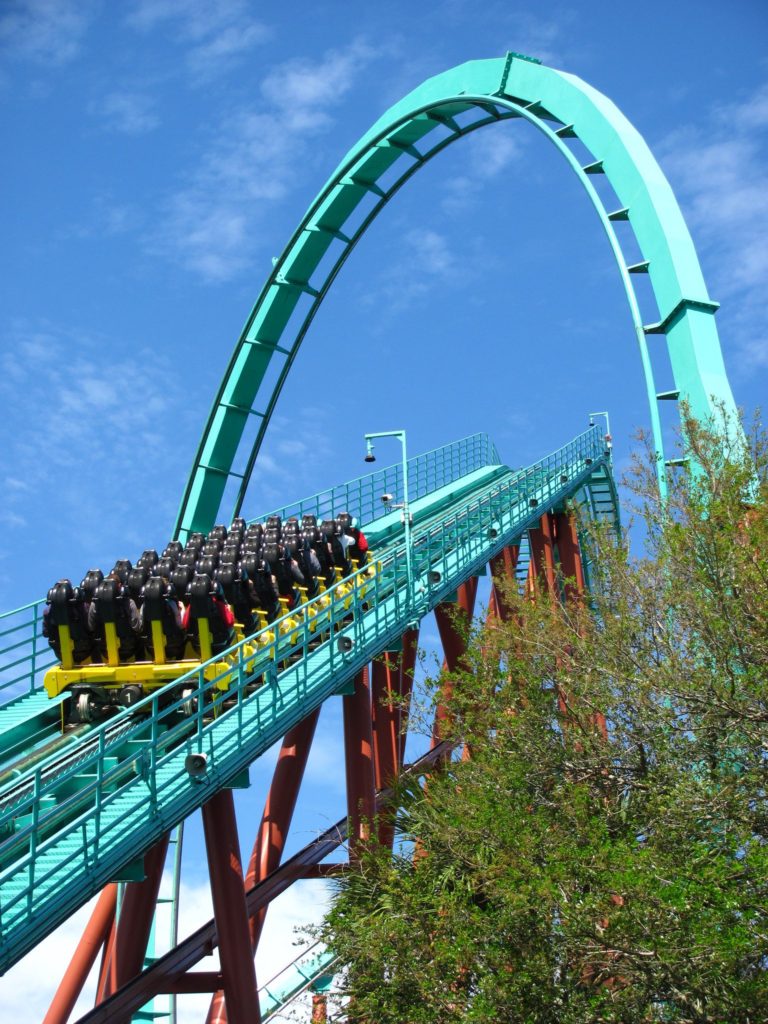Imagine a roller coaster so rough, its first riders told the news that they’d “need a new spine” afterwards. Imagine that the feedback on this multi-million dollar roller coaster was so consistantly negative that engineers literally rebuilt a section of track just to try to save the ride from being universally despised. Imagine that despite all their best efforts, the park determined that there was quite literally nothing that could be done to save the ride, tearing it down after just a few years.
It may sound surreal, but this almost-unbelievable tale is only the start of our story today as we explore one of the most short-lived and poorly-received roller coasters ever and the scar it left on one of the world’s most beautiful parks.
In our quest to tell the stories of rides from across the world, we made our way to Busch Gardens Williamsburg in Virginia where a forgotten family favorite – the Lost Legend: The Big Bad Wolf – dutifully served as the first “big” coaster for generations of locals before it closed forever. For twenty-five years, Big Bad Wolf terrorized the dense, misty forests of Virginia, swinging precariously amid Bavarian storybook villages and diving toward the waters of the Rhine River below.

For part of its life, Big Bad Wolf was mere feet away from another roller coaster tucked away in Busch Gardens’ Oktoberfest themed land… but this roller coaster lasted barely five years. From a Lost Legend, today, we’re going to turn our sights toward one of the most flubbed and failed roller coasters to ever exist, not to mention one of the most short-lived. Today, our Declassified Disaster series straps into Drachen Fire at Busch Gardens Williamsburg.
A Tale of Two Parks

Today, you’d be right to associate Busch Gardens with gorgeous theme parks that expertly blend Disney’s attention to detail with Six Flags’ thrills and a dash of SeaWorld’s animal encounters. The built-out destination parks in Virginia and Florida are among the top of their class. Of course, those two parks are the only two to survive from an original batch of four modern parks carrying the Busch Gardens name.
That’s because the Busch Gardens parks – including the two we know today – got their start as literal gardens developed as marketing vehicles for Anheuser-Busch, the once-American brewer behind Budweiser, Michelob, Rolling Rock, Shock Top, and countless more beverage brands.

Busch Gardens in Van Nuys, California (1964, themed to the South Pacific); Tampa, Florida (1959, themed to Africa); Houston, Texas (1971, themed to Asia); and Williamsburg, Virginia (1975, themed to Europe) included hospitality houses featuring product samples and stables housing the brand’s iconic Clydesdale horses. The parks made for a wonderful aside from the nearby breweries and acted as Anheuser-Busch’s intermediary in the community.
As we know, the parks in Williamsburg and Tampa began to evolve, adding amusement park rides and attractions over many years until they grew into full-grown theme parks boasting spectacular theming and entertainment. The other two closed in the 1970s.
That left two Busch Gardens parks – Williamsburg and Tampa; Virginia and Florida; Europe and Africa. However they were named, the distinction was clear and wonderful. And as the parks grew in the 1990s and beyond, it was their similarities and not their differences that made these two siblings so very unique.
Complements
To take a look at the ride lineups of the two Busch Gardens parks today is to find complementary pairs – one “African” and one “European.”

For example, in 1976, Tampa opened a bright yellow steel roller coaster by Arrow Dynamics, a now-defunct ride manufacturer who was at the cutting edge of steel coaster technology in the 1970s. Their ride in Tampa, Python, featured a double corkscrew, sending riders curling through elongated inversions.

Two years later, Williamsburg’s park called on Arrow to create another double inverting, serpentine, yellow coaster: Loch Ness Monster. Clearly a spiritual sibling of Python, Loch Ness Monster replaces the two corkscrews with interlocking loops – the first (and today, only) pair on the planet.


This intentional pairing continued as the two parks moved forward, traditionally sharing complementary rides. See, for example, Montu (1996) and Alpengeist (1997), two inverted roller coasters manufactured by the Swiss company Bolliger & Mabillard (B&M) where riders hang beneath the track in ski-lift style trains. Each is intentionally and brilliantly alike, yet cleverly unique… For example, Tampa’s Montu hugs the ground, diving through Egyptian sand pits while Alpengeist soars above a snowy Alpine valley in grand, sweeping turns.


More recently, SheiKra (2005) and Griffon (2007), two of B&M’s impressive floorless Dive Machine coasters, sending super-wide trains (8- and 10-across, respectively) free-falling face-first down 200-foot drops, named for the African bird of prey known to dive down to the water and the European mythological half-lion, half-eagle creature.


You’ll see it again with Cheetah Hunt (2011) and Verbolten (2012), both multi-launch family roller coasters that send guests zipping through the expansive African plains or the dense Black Forest of Germany, respectively.


Or the wild Tigris (2019) and the daredevil-themed Tempesto (2015 – both Premier Sky Rocket II models. While not every ride at one park has a sister at the other, the two Busch Gardens parks have found a pretty healthy balance.
However, there’s a very apparent disconnect between this build-and-match pattern the two parks developed through the 1990s. In 1993, Busch Gardens Tampa opened Kumba, a twisting, diving, coaster by B&M. The nearly 4,000 foot long ride features seven inversions including a 114 foot tall loop that wraps around the ride’s 143 foot tall lift hill, and a dizzying conclusion of interlocking corkscrews dug down into the ground. Kumba – which means, “roar” in the African Congo language – lives up to its name as its empty tubular steel tracks create a thundering, shuddering roar that most B&M roller coasters share.

One thing Kumba doesn’t share is a complementary ride at Busch Gardens Williamsburg. There is no “European” equivalent to Kumba. Or at least, not anymore… Why not? This is where the story gets interesting. How can a roller coaster be a Frankenstein creation? Read on…



B&M had never built any cobra rolls or interlocking corkscrews as of 1992. Arrow didn’t really have any existing coasters to mimic, just plans for something brand new that failed for them (and worked for B&M)
DrachenFire is probably my favorite coaster, along with Grizzly, the roughness of each being the primary draw. Drachen drew blood by jamming the posts of a friend’s earrings into her neck. I was sad to see it go.